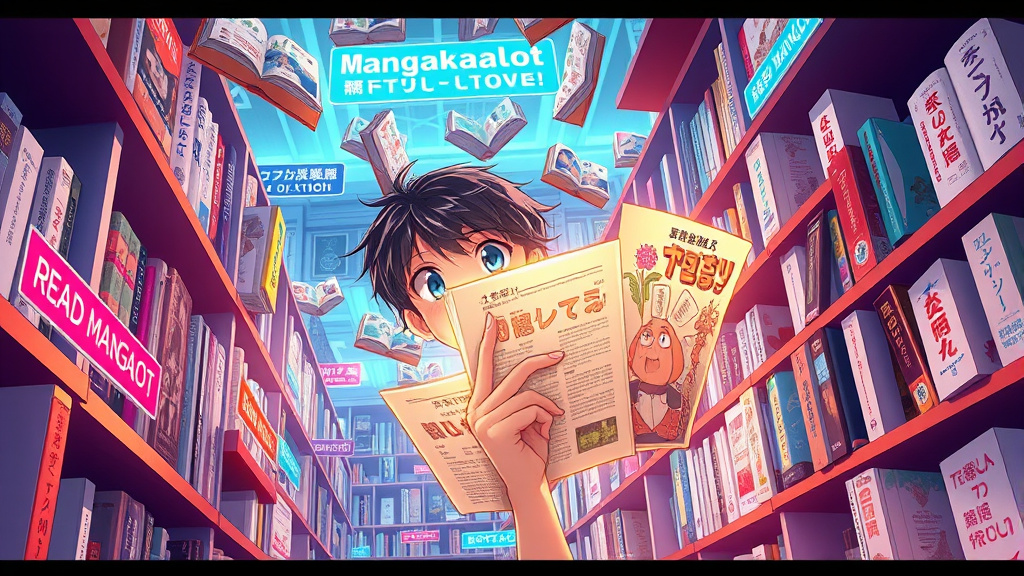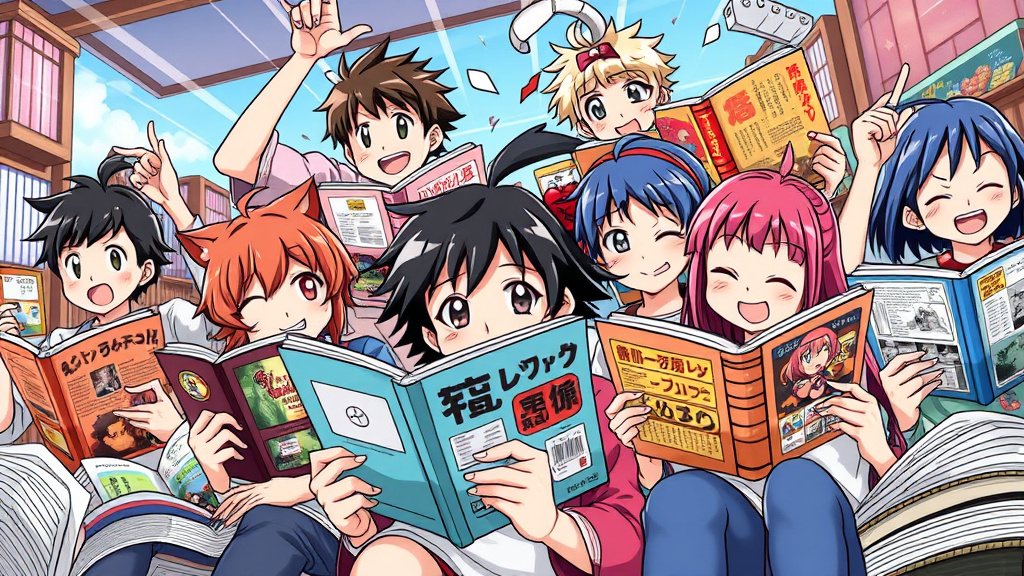anime manhwa has become a vibrant crossroad of cultural creativity, captivating audiences worldwide with its compelling storytelling, striking art styles, and dynamic characters. This fascinating fusion of Japanese animation and Korean graphic novels introduces a diverse array of narratives that are expanding the horizons of visual storytelling. As fans delve into this unique genre, they often wonder about the nuanced differences and similarities between anime and manhwa, along with their growing global influence and production processes.
In this comprehensive exploration, we will dissect the key distinctions between anime and manhwa, examine their rising popularity, analyze their artistic aesthetics, and explore how each medium adapts and influences global entertainment. We will also venture into the cultural and community aspects, observe their genre overlaps, and consider what the future holds for animated storytelling and comics in the context of an increasingly interconnected world. Whether you’re a seasoned enthusiast or a curious newcomer, this guide aims to deepen your understanding and appreciation of this dynamic artistic realm.
Anime vs. Manhwa – Exploring the Key Differences
Understanding the core differences between anime and manhwa offers valuable insight into how each medium uniquely crafts its storytelling experience. Anime, primarily Japanese animated TV series and movies, is characterized by its fluid animation, voice acting, music scores, and episodic storytelling, often adapted from manga or original creations. Meanwhile, manhwa are South Korean comics or graphic novels, typically published in a format similar to Western comics but with their distinct art style and pacing, usually consumed in digital or serialized paper formats.
From a storytelling perspective, anime often incorporates voice performances and vibrant motion, immersing viewers in a kinetic experience that complements its narrative. In contrast, manhwa emphasizes detailed artwork and panel layouts that control reading pace, often including textual narration and internal monologues that foster a deep connection to characters’ internal worlds. The two mediums also differ culturally—anime often embodies Japanese themes and aesthetic sensibilities, while manhwa reflects Korean societal nuances—yet both creatively explore themes like fantasy, romance, action, and psychology in compelling ways.
 Hình minh họa: anime manhwa – romance manga completed
Hình minh họa: anime manhwa – romance manga completedThe Rising Popularity of Manhwa – Challenging Anime’s Dominance?
In recent years, manhwa has experienced a meteoric rise in global popularity, frequently challenging the longstanding dominance of anime among fans of animated storytelling. Digital platforms like Webtoon and Tapas have democratized access, making a wide variety of manhwa accessible to a worldwide audience with just a few taps, often with translations in multiple languages. This digital shift has enabled creators to publish more diverse stories directly to readers, bypassing traditional publishing barriers, and fostering a vibrant community around serial works that develop loyalty and engagement.
This surge in popularity is also driven by the unique storytelling styles and modern themes that manhwa explores, often delving into genres such as fantasy, reincarnation, and transmigration with innovative plots and characterizations. The visual style, with its emphasis on clean lines, expressive characters, and dynamic action scenes, appeals greatly to fans who crave a fresh yet familiar art aesthetic. As a result, many anime adaptations of popular manhwa titles further catalyze their crossover appeal, shifting the landscape of animated storytelling and cultural exchange on a global scale.

Anime and Manhwa Aesthetics – A Comparative Analysis of Art Styles
The visual aesthetics of anime and manhwa, while sharing some similarities, are distinctive and reflective of their cultural origins and artistic traditions. Anime boasts a vast spectrum of animation styles—from hyper-realistic to highly stylized—often emphasizing smooth motion, expressive facial features, and vibrant color palettes that evoke emotion and atmosphere. Its animation techniques have evolved over decades, resulting in high-quality productions that can be cinematic, surreal, or minimalistic depending on the genre.
In contrast, manhwa is primarily a static art form—comics with a focus on detailed line work, character expressions, and panel compositions. The art style leans toward clean, sleek lines, with a tendency toward shaded black-and-white imagery, though color manhwa exist and are gaining popularity. The storytelling through visuals relies heavily on panel layouts, pacing, and visual cues to evoke mood and tension. This difference creates an engaging dynamic—anime immerses through movement, while manhwa invites readers to interpret and savor each scene at their own pace, resulting in a different but equally compelling aesthetic experience.
From Page to Screen – Anime Adaptations of Popular Manhwa Series
The adaptation of manhwa into anime has become a crucial link that bridges Korean narratives with broader international audiences. Popular titles such as “The God of High School” and “Solo Leveling” have successfully transitioned from comic pages into vibrant animated series, often sparking renewed interest and expanding fan bases. These adaptations not only increase visibility but also introduce the narrative and visual style of manhwa to viewers who might not traditionally engage with Korean comics.
However, adapting manhwa into anime is not without challenges—condensing lengthy story arcs, maintaining the original art style, and balancing animation quality with a production budget are ongoing considerations. Successful adaptations tend to be faithful to the source material, preserving key scenes and character designs while adding animation dynamics that elevate emotional impact. Overall, these adaptations serve as a testament to the storytelling potential of manhwa, transforming static pages into living, breathing worlds that resonate across cultures and media formats.
Beyond the Borders – The Global Impact of Anime and Manhwa
Both anime and manhwa are powerful cultural exports, shaping global perceptions of Japanese and Korean storytelling traditions. The worldwide popularity of anime has long established a framework of fan conventions, dedicated communities, and international streaming platforms that facilitate access. Meanwhile, manhwa’s digital proliferation through platforms like Webtoon has created an even broader global footprint, encouraging cross-cultural exchanges and influencing Western comics and animation styles.
This global influence goes beyond entertainment, contributing to cultural understanding and appreciation of Asian societies. Fans worldwide often explore the social, philosophical, and mythological themes embedded in these works, expanding their cultural literacy. Additionally, the interactions between fans of anime and manhwa foster a multicultural dialogue that encourages diversity and innovation within creative industries, illustrating how animation and comics are more than entertainment—they are vital channels for cultural diplomacy and collective identity.
Anime and Manhwa Fandoms – Examining Shared Passions and Unique Communities
The fandoms surrounding anime and manhwa are vibrant, passionate, and often deeply interconnected, fostering online communities that transcend geographical boundaries. Fans share theories, fan art, cosplays, and translations, creating a supportive space for discussion and creativity. Despite overlaps, each fandom also has its unique characteristics—anime fans tend to focus on voice actors, animation quality, and series binges, while manhwa readers are more engaged with art styles, story arcs, and chapter releases.
Both communities thrive on shared enthusiasm, but their social spaces can differ significantly—anime fandoms are often centered around streaming platforms and conventions, while manhwa communities exist predominantly in digital spaces such as Reddit, Discord, and webtoon-specific forums. These communities not only celebrate their favorite works but also influence industry trends, pushing creators to innovate and meet fan demands for more diverse and high-quality content. Ultimately, the passion in both fandoms fuels the ongoing growth and evolution of anime manhwa as cultural phenomena.
Genre Convergence – Where Anime and Manhwa Overlap
One of the most intriguing aspects of anime manhwa is the considerable genre overlap that exists between the two mediums. Both explore a vast array of genres—from traditional action-adventure and fantasy to romance, horror, and psychological drama. This convergence enables fans to enjoy stories that are rich in tailor-made narratives, regardless of whether they prefer animated sequences or illustrated pages.
This overlap also influences creators, inspiring hybrid storytelling techniques and genre crossovers that keep the medium fresh and innovative. For instance, many manhwa feature complex character development akin to anime series, while some anime draw from manga and manhwa stories, blending visual storytelling techniques. The continual blending and borrowing across mediums foster a rich ecosystem where storytelling opportunities expand, leading to new paradigms of entertainment that are immersive, emotionally resonant, and visually captivating.
Anime and Manhwa Production – A Look Behind the Scenes
Behind the captivating worlds of anime and manhwa lies a complex and fascinating production process rooted in artistry, technology, and cultural collaboration. Creating anime involves a team of writers, storyboard artists, animators, voice actors, and directors—each contributing their expertise over months or even years of production. The animation process, especially in high-budget projects, involves meticulous frame-by-frame work, CGI integration, and post-production enhancements aimed at delivering seamless visuals and emotional depth.
In contrast, manhwa production relies heavily on individual artists or small teams working digitally, often releasing chapters on a regular schedule to maintain reader engagement. The digital nature of most manhwa allows for rapid revisions, colorization, and stylistic experimentation, making it more agile but also highly dependent on technological tools. Both mediums stem from collaborative efforts that blend traditional artistry with cutting-edge technology, reflecting cultural storytelling styles while advancing shared ambitions of visual excellence and narrative innovation.
The Future of Animated Storytelling – Anime, Manhwa, and Beyond
Looking ahead, the future of anime and manhwa is poised for exciting developments driven by technological innovation, globalization, and changing audience preferences. Advances in AI-assisted animation and digital publishing are expected to streamline production processes, enabling more ambitious projects with higher visual fidelity and diverse storytelling. Virtual reality (VR) and augmented reality (AR) technologies promise immersive experiences that could redefine how viewers and readers engage with stories, blurring the lines between passive consumption and interactive participation.
Furthermore, collaborative projects across various media—such as web series, novels, games, and merchandise—are gaining traction, transforming anime manhwa into multimedia franchises. As cultural exchange continues to flourish, we can anticipate even richer narratives rooted in diverse cultural backgrounds, fostering inclusivity and representation. The convergence of global markets will likely propel anime manhwa into new realms of innovation, cementing its place as a cornerstone of next-generation storytelling.
Cultural Influences Shaping Anime and Manhwa Narratives
Both anime and manhwa reflect and are shaped by their respective cultural landscapes, translating societal values, myths, and philosophies into visual stories. Japanese anime often explores themes of honor, perseverance, and existential questions, rooted in deep cultural traditions like Shinto and Buddhism. Meanwhile, manhwa frequently examines social hierarchies, family dynamics, and modern Korean issues, infusing their narratives with contemporary relevance.
These cultural influences profoundly impact character archetypes, storytelling motifs, and aesthetic choices. For instance, the depiction of heroism in anime often emphasizes collective harmony and personal growth, whereas manhwa might focus more on individual ambition and social critique. As these mediums gain international audiences, they serve as cultural ambassadors, fostering understanding through storytelling while simultaneously evolving through global influences, which in turn inspire new cultural expressions and narratives.
Conclusion
The worlds of anime manhwa are rich with cultural nuance, artistic innovation, and storytelling diversity, reflecting a confluence of Japanese and Korean artistic traditions that appeal to global audiences. From distinct aesthetic approaches and thematic explorations to the evolving landscape of adaptation, fandom, and technological advancements, both mediums continue to shape the future of entertainment. Their shared passions and unique communities fuel a dynamic cultural exchange that transcends borders, fostering appreciation, creativity, and collaboration. As anime and manhwa evolve together in this interconnected era, they promise to deliver even more immersive, innovative, and culturally rich experiences for generations of fans to come.
